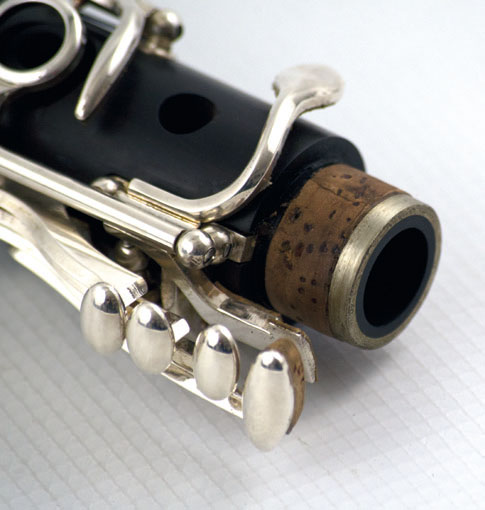
The John Packer 321 series clarinets are manufactured from Grenadilla wood and enjoy the benefit of having silver keys alongside design specs that would normally be expected on far more expensive instruments. The decision to put metal rings on the tenon joints gives this instrument a very attractive (and expensive) look and I, for one, couldn't wait to get it out of its ‘new professional case’ to put it through its paces.
Incidentally, the case is a lightweight, single case and includes an A4 pocket plus backpack straps. I'm guessing this is the definition that Packer is using when it describes it as ‘professional’, but to my mind, it's a tad on the large side. I'd prefer a more streamlined design with no straps, as the case would then easily fit in a small rucksack, but of course, this is simply personal preference.
Anyway, back to the important part – the instrument. My first few notes on the instruments were made using my own mouthpiece (Vandoren BD5 with a Vandoren V21 3.5+ reed) and I'm delighted to report that I found both instruments very responsive in all registers. The keys are ergonomically placed, and I didn't scramble around slipping off keys. In my opinion, with these two basics ticked, this means that this outfit is a completely (dare I say) ‘viable’ option in the world of intermediate clarinets.
Digging deeper, intonation took a moment to get used to and (when playing socially distanced duets with a fellow professional clarinettist, Ben Woodgate), the instrument did not show any real sign of weakness. The top was especially clear and smooth, and I found the instrument a joy to play. Lower down, there were a couple of stuffy notes (which would probably easily be fixed with a visit to a woodwind repairer) but the overall feeling after playing was resoundingly positive.
On the assumption that with any quality instrument any provided mouthpiece simply completes the outfit, I did test the included mouthpiece which I believe is designed to be free blowing and would be ideal for a beginner. When buying an intermediate instrument, a prospective buyer may have already upgraded and chosen their mouthpiece separately, so this mouthpiece may not suit everyone.
One feature that gives the clarinet its classy look is the metal tenon rings that are usually reserved for far more expensive clarinets. These serve to protect the tenon from chips and cracks and indicate that the manufacturer is expecting these instruments to stand the test of time. An adjustable thumb rest helps convey the feeling of quality, but perhaps the most striking features are the ringless heavyweight bell and reinforced shaped barrel. Both appear to pay respects to similar products available from the Backun stable and therefore also help to convey the feeling of quality.
During my play tests I swapped the bells and barrels onto my instruments to check what difference I could detect. Unfortunately, any difference I perceived was at best negligible, so I'm going to stick my neck out here and say I believe the biggest difference is cosmetic. If a player likes it, they will buy it and it certainly doesn't detract from the sound in any way. In any case, my advice for the best results on any clarinet is to personally select (in order of importance) your mouthpiece, reeds, barrel and ligature.

To my mind, this instrument's trump card is its bore, which is poly cylindrical. For the nongeeks amongst us, (there must be some?) this design flares in stages and is supposed to offer the player a rounder sound than the standard cylindrical option. Buffet RCs have the same bore and are a firm favourite for orchestral players, and this instrument (although not quite directly comparable) goes a long way to match the same feeling for a fraction of the price – I'm a big fan!
For £819 (at the time of writing) you get a beautiful looking instrument that plays well, has many luxury features and, with the addition of a professional mouthpiece, will keep any player happy for years to come. It's a proper stepping-stone before laying out some serious cash on a professional clarinet.
As an added bonus, this range of clarinets includes an E flat model that enjoys the same specs as the B flat and A, making it perfect for school bands and simply as an affordable option when considering acquiring an additional instrument. I didn't get to play the E flat instrument for this review, but if it's anything like these two, it should sell like hotcakes!








